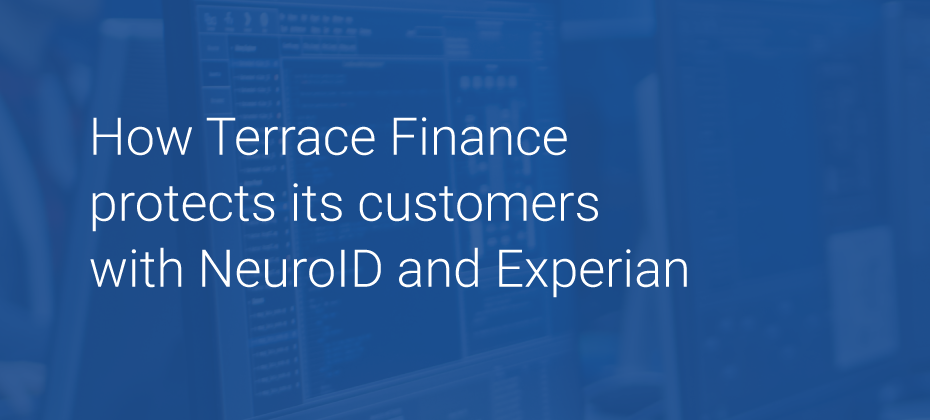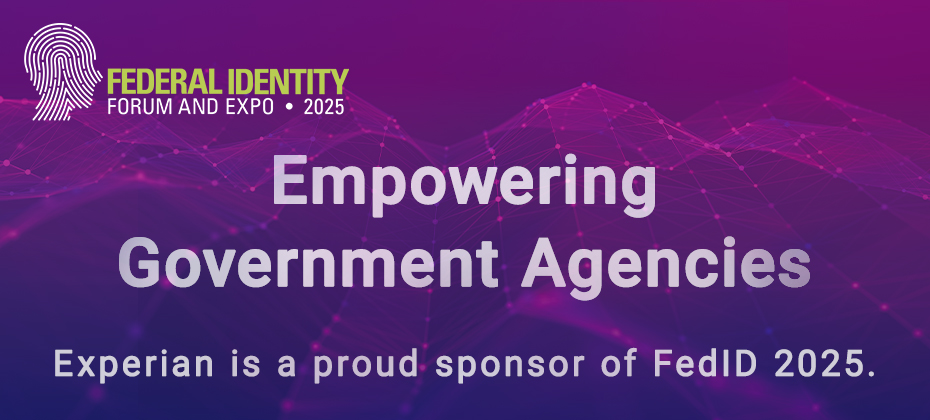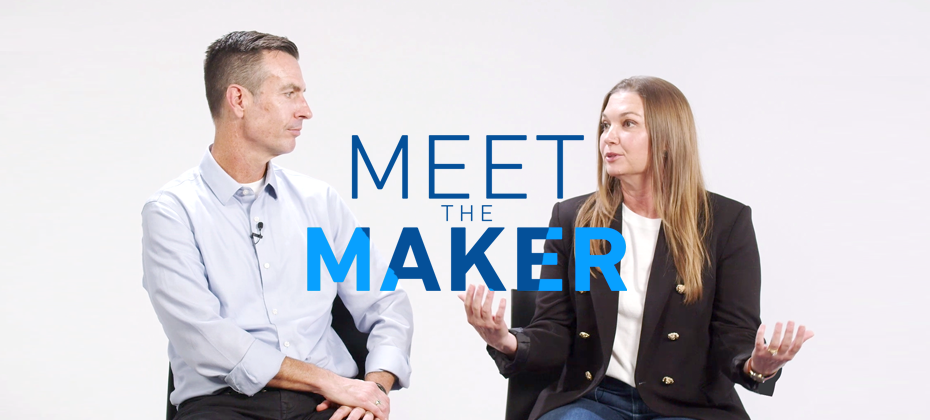Tag: fraud

In today’s fast-evolving digital landscape, fraud prevention is no longer a reactive function, it’s a strategic imperative. As financial institutions, fintechs and government agencies face increasingly sophisticated threats, the need for scalable, transparent and AI-powered solutions has never been greater. Experian stands at the forefront of this transformation, delivering proven technology, unmatched data intelligence and regulatory-ready innovation that empowers organizations to stay ahead of fraud. One platform. Every fraud challenge. Experian’s fraud prevention ecosystem delivers scale, speed and sophistication. Unlike fragmented solutions that require patchwork integrations, Experian offers a unified platform that spans the entire fraud lifecycle from identity verification to transaction monitoring and case management. With the exciting acquisition of NeuroID, Experian is delivering more value than ever before with our shared commitment to staying ahead of emerging fraud threats. Embedding NeuroID’s behavioral expertise into Experian’s data systems and platforms is transformative. Together, we’re redefining what fraud prevention can look like in a real-time, AI-driven world. – Kathleen Peters, Chief Innovation Officer, Experian With tools like NeuroID, FraudNet and Precise ID, Experian delivers real-time decisioning and orchestration across diverse use cases. These technologies are not just buzzwords, they’re battle-tested engines driving measurable impact across millions of daily decisions. Data dominance that drives accuracy Experian’s proprietary datasets and global consortia provide unparalleled access to fraud intelligence. This data advantage enables clients to detect anomalies faster, reduce false positives and optimize fraud strategies with precision. Experian supports over five billion fraud events annually across the largest banks, fintechs and government agencies. That’s 10x more fraud and identity use cases than most competitors can manage across industries and institutions of all sizes. AI innovation with guardrails While many vendors are just beginning to explore AI, Experian has spent the last two decades embedding it into its core products and services. The launch of the Experian Assistant for Model Risk Management exemplifies this commitment. Integrated into the Ascend Platform and powered by ValidMind technology, this AI assistant streamlines model governance, enhances auditability, and accelerates deployment, all while remaining compliant with evolving regulations. Experian’s AI is not a black box. It’s explainable, auditable and developed with governance in mind. This transparency gives clients the confidence to innovate without compromising compliance. Compliance is built in, not bolted on Experian’s solutions are designed with compliance at the core. From FCRA and GLBA to KYC and CIP, Experian has a long-standing track record of aligning with regulatory frameworks. The company’s ability to demystify machine learning and make it transparent and explainable sets it apart in an industry where trust is paramount. As AI adoption accelerates, Experian’s governance models ensure that innovation doesn’t outpace accountability. Clients benefit from automated documentation, synthetic data generation and model transparency which are all essential for navigating today’s complex regulatory landscape. Empowering clients to own their outcomes Experian doesn’t just deliver tools, it empowers users. With self-service model building, clients can customize fraud strategies, optimize performance, and respond to threats in real time. This flexibility ensures that organizations aren’t just reacting to fraud, they’re proactively shaping their defenses. Experian’s fraud prevention solutions are designed to be intuitive, scalable, and user-centric, enabling teams to make smarter decisions faster. A global brand you can trust Trust is earned, not claimed. Experian’s decades-long commitment to data stewardship, innovation and client success has made it a globally recognized authority in fraud prevention. With thousands of enterprise clients and strategic partnerships, Experian delivers unmatched reliability and scale. From supporting the largest financial institutions to enabling fintech startups, Experian’s infrastructure is built to manage complexity with confidence. Thought leadership that moves the industry Experian continues to lead the conversation on fraud prevention and identity verification. As a sponsor of the 2025 Federal Identity Forum & Expo, Experian showcased its latest innovations in behavioral analytics and fraud detection, helping government agencies stay ahead of evolving threats. The company’s U.S. Identity & Fraud Report, now in its tenth year, provides actionable insights into shifting fraud patterns and consumer behavior reinforcing Experian’s role as a trusted thought leader. In a market flooded with noise, Experian delivers clarity. Its unified fraud prevention platform, backed by decades of AI innovation and regulatory expertise, empowers organizations to protect their customers, optimize operations, and lead with confidence. Experian isn’t just keeping up with the future of fraud prevention, it’s defining it. Learn more

E-commerce is booming. Global online sales continue to rise with forecasts predicting growth to $7.89 trillion by 2028. Unfortunately, with any lucrative market comes fraudulent activity. As e-commerce grows by leaps and bounds, so do fraud incidents. E-commerce fraud is defined as any illegal or deceptive activity conducted during an online transaction with the intent to steal money, goods or sensitive information. As digital shopping flourishes, the tactics criminals use to exploit vulnerabilities in payment systems, customer accounts and merchant operations is rapidly expanding. According to Experian’s tenth annual Identity & Fraud Report, nearly 60% of U.S. businesses reported higher fraud losses in 2025, driven by more sophisticated attacks and legacy security gaps. The same report highlighted the damage from e-commerce fraud goes beyond the loss of revenue, directly impacting consumer trust. The survey found that only 13% of consumers feel fully secure opening new accounts. Chief amongst their concerns, 68% of consumer worry about identity theft, while 61% are fearful of stolen credit card data. The constant threat of e-commerce fraud has placed tremendous pressure on merchants and retailers to take robust steps in mitigating these attacks. In addition to protecting the bottom line, such measures are essential to earning consumer trust. According to Experian’s merchant-focused edition of our Identity & Fraud Report, consumers consistently perceive physical and behavioral biometrics tools as the most secure authentication methods — yet merchants are slow to adopt them. This gap highlights a key opportunity for businesses to strengthen security practices and build trust without adding friction to the user experience. After all, 74% of consumers say security is the most important factor when deciding to engage with a business.3 E-commerce fraud comes in many shapes and sizes E-commerce fraud is an umbrella term for a variety of attacks that target merchants and retailers. Amongst these is chargeback fraud, which occurs when a customer makes a legitimate purchase and then falsely disputes the charge with their credit card issuer, claiming the item never arrived or the transaction was unauthorized. The merchant loses both the product and the payment. Another is account takeover fraud, which happens when cybercriminals gain access to a customer’s online account, often through stolen login credentials, and use it to make unauthorized purchases, change shipping details or withdraw loyalty points. In card-not-present (CNP) fraud, attackers use stolen credit card information to make purchases online or by phone, where the physical card isn’t required. Because identity verification is limited, merchants bear the financial losses. This type of fraud includes BIN attacks, targeting the Bank Identification Number (BIN) on a credit or debit card that identifies the issuing financial institution. The goal of a BIN attack is to discover valid card numbers that can be used for fraudulent transactions. There are also refund fraud attacks, which involve scammers exploiting return or refund policies — such as claiming an item didn’t arrive or sending back a different or counterfeit product for reimbursement. Together, different forms of e-commerce fraud cost businesses billions annually, demanding strong fraud detection, authentication and monitoring systems to combat them. E-commerce fraud prevention should be a priority for every merchant and retailer. E-commerce fraud prevention: Ways merchants can fight back Merchants report the highest rates of new account fraud, yet it ranks just 15th among their active investments for 2025. While fraudsters continue to find new and innovative ways to attack, merchants and retailers can better prepare by following industry best practices in e-commerce fraud prevention: Chargeback fraud: When it comes to preventing and managing chargeback fraud, merchants should ensure customers are fully aware of return and refund policies. Utilize Address Verification Services (AVS) and Card Verification Value (CVV2) verification for online and over-the-phone transactions to establish the validity of a purchase. Keeping meticulous records of all transactions can serve as compelling evidence to defend the transaction. Leverage advanced fraud detection tools, such as tokenization and machine learning and AI fraud detection solutions that flag potentially fraudulent transactions and detect suspicious spending patterns and anomalies. Account takeover fraud: Merchants can minimize the risk of account takeover fraud using holistic, risk-based identity and device authentication, as well as behavioral analytics or targeted, knowledge-based authentication. End-to-end fraud management solutions can help reduce manual processes and remove the risk of information silos. Card-not-present fraud: Mitigating the risk of CNP fraud can be accomplished by implementing additional security measures at the time of transaction. These can include requiring verification information, such as a CVV code or a billing zip code to further authenticate the card holder’s identity. Advanced e-commerce fraud prevention tools To stay ahead of the fraudsters, merchants and retailers should take a multilayered approach to e-commerce fraud prevention that takes advantage of the latest, most advanced tools. At Experian®, we offer innovative fraud management solutions that provide the right level of security without causing customer friction. Three advanced e-commerce fraud prevention tools that every merchant should have in their arsenal include: Experian LinkTM: This tool enhances credit card authentication by linking the payment instrument with the digital identity presented for payment. Experian Link enables merchants to quickly and accurately identify legitimate customers to reduce friction and increase acceptance rates, reduce operation costs by preventing fraudulent credit card use, make better risk decisions to protect legitimate customers, limit false declines and identify potential fraudsters. Behavioral analytics: With the growth of AI, fraudsters can now replicate static data, but mimicking human behavior remains challenging. Behavioral analytics detects subtle interaction patterns that are extremely difficult for GenAI-driven fraudsters, including fraud rings and next-generation fraud bots, to replicate. Powered by NeuroID, our behavioral analytics capabilities help organizations proactively mitigate fraud, reduce false positives and streamline risk detection, ultimately creating a secure and frictionless experience for trustworthy users — while locking out fraudsters earlier. Precise ID®: This advanced tool enables businesses to pursue growth confidently by providing robust, real-time identity verification, as well as the ability to accurately identify a wide range of fraud risks including identity theft, synthetic identity and first-party fraud, along with tools that facilitate confirmation when risks are detected. The threat of fraud never stops Merchants and retailers are under a constant and unrelenting threat of attacks by fraudsters. Vigilance is required to protect the customer experience and the bottom line. Fortunately, innovative tools are leveling the playing field, offering much needed e-commerce fraud protection. To learn how Experian can help you combat fraud and meet consumers’ demands for trust and privacy, explore our best-in-class fraud management solutions and download our latest report on closing the trust gap in e-commerce. Explore our solutions Download report

Three winners were announced at Experian’s inaugural Vision Awards ceremony held on Tuesday, October 7 in front of more than 800 attendees at Experian’s Vision Conference held in Miami, Fla. Figure, PREMIER Bankcard and Members First Credit Union were recognized for their work in artificial intelligence, innovation and financial empowerment. The four-day gathering provided a dynamic forum for exploring the latest innovations shaping the future of data-driven decisioning. “Our Vision Awards celebrate the unique impact financial industry leaders can have when data, technology and purpose align,” said Jeff Softley, CEO, Experian North America. “We are proud to recognize these three organizations with whom we collaborate to drive opportunities and help create change for society as a whole.” The Vision Awards recognize the achievements of organizations that accelerate action. These forward-thinking institutions leverage artificial intelligence, innovation and financial empowerment to drive opportunities and create actionable change for consumers, businesses and society. Recognizing Leaders in AI, Innovation, and Financial Empowerment A panel of interdisciplinary judges reviewed nominations from across industries across the regions, evaluating submissions based on rigor, originality, and impact. The 2025 winners reflect how organizations are leveraging data and technology to advance innovation and inclusion. Excellence in AI: Figure Figure’s submission showcased how it has redefined consumer lending outreach through an AI-driven targeting engine powered by more than 90 machine learning models and 5,000+ behavioral and financial features. By combining Experian’s prescreen data with proprietary insights, Figure delivers highly precise, cost-efficient firm offers of credit — helping it become one of the top three home equity line of credit lenders in the U.S. “This win reflects more than just a successful application of AI. It represents the broader innovative culture deeply embedded in our company’s DNA,” said Ruben Padron, Chief Data Officer at Figure. “Our work with Experian has been instrumental in helping us assess creditworthiness and predict borrower intent with greater precision.” Excellence in Innovation: PREMIER Bankcard PREMIER Bankcard continues to demonstrate how financial inclusion and innovation go hand in hand. From modernizing its technology to reimagining its product suite, PREMIER has made bold strides to serve the underserved and democratize access to credit. “This award affirms our belief that financial inclusion and innovation must go hand in hand,” said Chris Thornton, Senior Vice President of Credit at PREMIER Bankcard. “We’re committed to reaching those who need it most, and Experian has proven to be an exceptional partner in that mission.” With more than 30 million customers served, PREMIER has become a leader in first-time and second-chance credit, while also giving back more than $4 billion to charitable causes through its partnership with First PREMIER Bank and founder Denny Sanford. “We’re here to change lives,” Thornton added. “That’s how we measure success — and that’s ultimately what we’re investing in.” Excellence in Financial Empowerment: Members First Credit Union Members First Credit Union was honored for its commitment to inclusive lending and community development across Michigan. In 2024 alone, the credit union’s programs helped thousands of members access fair and affordable credit, supported 166 community organizations, and contributed nearly $230,000 in donations — backed by 2,000 volunteer hours from its employees. “Our impact demonstrates how mission-driven financial institutions can meaningfully expand access, strengthen communities, and foster long-term financial health,” said Carrie Iafrate, CEO/President at Members First Credit Union. “We’re honored to receive this recognition and inspired to continue helping individuals thrive financially.” Honoring the Judges Behind the Vision The 2025 Vision Awards were evaluated by a distinguished panel of judges representing both Experian and external associations and partners in the financial inclusion community, including: Lisa Cantu-Parks, Vice President of Resource Development, Unidos Jean Carlos Rosario Mercado, Juntos Avanzamos Program Officer, Inclusiv Ian P. Moloney, Senior Vice President, Head of Policy and Regulatory Affairs, American Fintech Council Marc Morial, President and CEO, National Urban League Kevin O’Connor, Senior Vice President, Membership and Sponsorship, Consumer Bankers Association Their expertise ensured that the winners reflect the industry’s highest standards of innovation, integrity, and impact. Ian P. Moloney, Senior Vice President, Head of Policy and Regulatory Affairs, American Fintech Council, and Rhonda Spears Bell, Senior Vice President and Chief Marketing Officer, National Urban League, were at the recognition session at Vision and shared about their organizations and experience serving as a judge. Video messages were also shared from Jean Carlos Rosario Mercado of Inclusiv and Kevin O’Connor of Consumer Bankers Association, who were unable to attend the live event. “I greatly appreciated the opportunity to participate as a judge in the Experian Vision Awards because it provided me a chance to look beyond my usual day-to-day, and understand the myriad of innovations and projects going on to help consumers and the industry,” Moloney said. “The award winners tonight showcase the best of our industry, and I appreciate the opportunity to take part in highlighting their success.” “I’m inspired by the outstanding organizations we’re celebrating tonight - each making a lasting impact in our country and globally,” Spears Bell said. “I want to take a moment to recognize Experian - not only as a valued corporate partner, but as a true ally in our mission to advance financial literacy, stability, and generational wealth.” Looking Ahead: Vision Awards 2026 Experian will continue to champion progress in financial services and across all industries, and the Vision Awards offers one of the avenues through which the industry can recognize organizations driving change through responsible innovation. Submissions for the 2026 Vision Awards open on June 1, 2026. To learn more about this year’s winners and how to apply for next year’s program, visit the Vision Awards page.

Day 1 of Vision 2025 is in the books – and what a start. From bold keynotes to breakout sessions and networking under the Miami sun, the energy and inspiration were undeniable. A wave of change: Jeff Softley opens Vision 2025 The day kicked off with a powerful keynote from Jeff Softley, Experian North America CEO, who issued a call to action for the industry: to not just adapt to change, but to lead it. “It isn’t a ripple – it’s a tidal wave of technology,” Jeff said. “Together we ride this wave with confidence.” His keynote set the tone for a day centered on innovation and the future of financial services – where technology, insight and trust converge to create lasting impact. Jeff continues this conversation in the latest Experian Exchange episode, where he explores three forces shaping the industry: the rise of AI, the demand for personalized digital experiences and the mission to expand credit access for all. Turning vision into action: Alex Lintner on agentic AI Building on Jeff’s message, Alex Lintner, CEO of Experian Software and Technology, took the stage to show how Experian is turning innovation into measurable results. His keynote explored how agentic and advanced AI capabilities are redefining financial services ROI and powering the next generation of the Ascend Platform™. For a deeper look into how Experian is reshaping the economics of credit and fraud decisioning, read the latest American Banker feature. Unfiltered insights from “Mr. Wonderful” The day’s highlight came from Kevin O’Leary, investor, entrepreneur and the always-candid “Mr. Wonderful.” With his trademark wit and honesty, Kevin shared sharp insights on thriving in a disruptive economy, offering candid advice on leadership, risk and opportunity. He even gave attendees a peek behind the Shark Tank curtain, revealing a few surprises and the mindset that drives his bold business decisions. Breakouts that inspired and informed The conference floor buzzed with energy as attendees joined breakout sessions on fraud defense, AI-driven personalization, regulatory trends and consumer insights. Sessions highlighted how Experian’s unified value proposition is fueling double-digit growth, how to future-proof credit risk strategies and how data and innovation are redefining customer engagement across the lifecycle. Hands-on innovation and connection The Innovation Showcase gave attendees an up-close look at Experian’s latest tools and technologies in action. Meanwhile, friendly competition kept the excitement high through the Vision mobile app leaderboard – with every check-in and connection earning points toward the top spot. Networking beyond the conference hall walls As the sun set, Vision 2025 shifted into high gear with unforgettable networking events across Miami – from golf at the Miller Course to art walks, brewery tours and a scenic cruise through Biscayne Bay. An evening to remember The day closed with the first-ever Vision Awards Dinner, celebrating standout leaders who are shaping the future of financial services. Up Next: Day 2 The momentum continues tomorrow as more keynote speakers take the stage. Stay tuned for more insights, innovation, and inspiration from Vision 2025.

Income and employment verification fraud is surging in the tenant screening industry, putting traditional verification methods under intense pressure. As economic uncertainty grows and document forgery becomes more sophisticated, it's clear that legacy processes are no longer sufficient. Recent findings highlight the urgency for change. According to the NMHC Pulse Survey, 93.3% of property managers reported encountering fraud in the past year, with 84.3% citing falsified paystubs and fake employment references as the most common tactics. As AI-generated forgeries become increasingly convincing and accessible, relying solely on manual review is proving inadequate. A Shift in Strategy: Toward Smarter Income and Employment Verification Historically, tenant screeners have relied on methods such as manual document review, direct employer contact, payroll APIs, and verification of assets (VOA). While these remain important, they are no longer capable of keeping pace with today’s verification challenges. In response, many screening companies are exploring new income verification tools that offer improved fraud prevention, lower operational costs, and faster turnaround. These innovations include layered approaches that combine observed data, permissioned uploads, and automated fraud detection technologies. Introducing Experian Observed DataTM in Tenant Screening One emerging solution in the fight against rental application fraud is the use of observed data during tenant screening. This method uses collectively sourced insights to assess whether an applicant’s income and employment claims are likely to be accurate. Experian Observed Data is takes inputs from many sources including creditors, property managers and others. This type of data starts out as consumer stated data but is substantiated by third party creditors who have originated lending products and report on the performance of these products. Although this method is not FCRA-compliant and cannot be used to approve or deny applications, it is highly effective as an early step in the screening process. Some sources of Experian Observed Data include a confidence score that can help screeners assess how closely an applicant’s stated information aligns with observed trends and can help screening companies to better assess their prioritization queue to determine if more data points are needed. Why Experian Observed Data Matters To combat fraud without driving up costs or slowing down the tenant screening process, screening companies need reliable, efficient tools. Experian Observed Data supports this need by offering a faster, more scalable approach to assessing risk. Key benefits include: Early detection of discrepancies in reported income or employment The ability to prioritize high-risk applications for further review A more cost-effective alternative before committing to premium verification services For instance, if an applicant has a strong credit report and clean background check, and Experian Observed Data supports their stated income, further verification may be unnecessary. If inconsistencies are flagged, screening companies can escalate to tools such as AI document analysis or direct outreach. Fraud Prevention Through Smarter Workflows The use of Experian Observed Data also aligns with a broader shift toward AI document fraud detection and layered verification strategies. Instead of applying the same tools to every application, screening companies can now implement decision trees that use lower-cost tools first, escalating only when risk or uncertainty increases. This adaptive approach is particularly relevant as screener companies strive to improve accuracy and efficiency at scale. By deploying Experian Observed Data as a first step, tenant screening professionals can better allocate resources while remaining vigilant against fraud Future Proofing Verificaiton As the income and employment verification landscape evolves, screening companies must move beyond legacy methods and adopt tools that are responsive to today’s challenges. Experian Observed Data provides a scalable, low friction starting point that supports smarter decision-making and better fraud detection. Coming to our next blog: We will explore how manual research verifications and AI-powered document upload solutions enhance the effectiveness of modern income verification tools, creating a more resilient and adaptable tenant screening process.

In today’s digital lending landscape, fraudsters are more sophisticated, coordinated, and relentless than ever. For companies like Terrace Finance — a specialty finance platform connecting over 5,000 merchants, consumers, and lenders — effectively staying ahead of these threats is a major competitive advantage. That is why Terrace Finance partnered with NeuroID, a part of Experian, to bring behavioral analytics into their fraud prevention strategy. It has given Terrace’s team a proactive, real-time defense that is transforming how they detect and respond to attacks — potentially stopping fraud before it ever reaches their lending partners. The challenge: Sophisticated fraud in a high-stakes ecosystem Terrace Finance operates in a complex environment, offering financing across a wide range of industries and credit profiles. With applications flowing in from countless channels, the risk of fraud is ever-present. A single fraudulent transaction can damage lender relationships or even cut off financing access for entire merchant groups. According to CEO Andy Hopkins, protecting its partners is a top priority for Terrace:“We know that each individual fraud attack can be very costly for merchants, and some merchants will get shut off from their lending partners because fraud was let through ... It is necessary in this business to keep fraud at a tolerable level, with the ultimate goal to eliminate it entirely.” Prior to NeuroID, Terrace was confident in its ability to validate submitted data. But with concerns about GenAI-powered fraud growing, including the threat of next-generation fraud bots, Terrace sought out a solution that could provide visibility into how data was being entered and detect risk before applications are submitted. The solution: Behavioral analytics from NeuroID via Experian After integrating NeuroID through Experian’s orchestration platform, Terrace gained access to real-time behavioral signals that detected fraud before data was even submitted. Just hours after Terrace turned NeuroID on, behavioral signals revealed a major attack in progress — NeuroID enabled Terrace to respond faster than ever and reduce risk immediately. “Going live was my most nerve-wracking day. We knew we would see data that we have never seen before and sure enough, we were right in the middle of an attack,” Hopkins said. “We thought the fraud was a little more generic and a little more spread out. What we found was much more coordinated activities, but this also meant we could bring more surgical solutions to the problem instead of broad strokes.” Terrace has seen significant results with NeuroID in place, including: Together, NeuroID and Experian enabled Terrace to build a layered, intelligent fraud defense that adapts in real time. A partnership built on innovation Terrace Finance’s success is a testament to what is possible when forward-thinking companies partner with innovative technology providers. With Experian’s fraud analytics and NeuroID’s behavioral intelligence, they have built a fraud prevention strategy that is proactive, precise, and scalable. And they are not stopping there. Terrace is now working with Experian to explore additional tools and insights across the ecosystem, continuing to refine their fraud defenses and deliver the best possible experience for genuine users. “We use the analogy of a stream,” Hopkins explained. “Rocks block the flow, and as you remove them, it flows better. But that means smaller rocks are now exposed. We can repeat these improvements until the water flows smoothly.” Learn more about Terrace Finance and NeuroID Want more of the story? Read the full case study to explore how behavioral analytics provided immediate and long-term value to Terrace Finance’s innovative fraud prevention strategy. Read case study

Experian is proud to be a Thought Leadership Sponsor at this year’s Federal Identity Forum & Expo (FedID)! We’re bringing the latest innovations in fraud prevention, identity verification, and behavioral analytics – all designed to help government agencies protect access, ensure trust, and stay ahead of evolving threats.

Now in its tenth year, Experian’s U.S. Identity and Fraud Report continues to uncover the shifting tides of fraud threats and how consumers and businesses are adapting. Our latest edition sheds light on a decade of change and unveils what remains consistent: trust is still the cornerstone of digital interactions. This year’s report draws on insights from over 2,000 U.S. consumers and 200 businesses to explore how identity, fraud and trust are evolving in a world increasingly shaped by generative artificial intelligence (GenAI) and other emerging technologies. Highlights: Over a third of companies are using AI, including generative AI, to combat fraud. 72% of business leaders anticipate AI-generated fraud and deepfakes as major challenges by 2026. Nearly 60% of companies report rising fraud losses, with identity theft and payment fraud as top concerns. Digital anxiety persists with 57% of consumers worried about doing things online. Ready to go deeper? Explore the full findings and discover how your organization can lead with confidence in an evolving fraud landscape. Download report Watch on-demand webinar Read press release

Powered by GenAI and increasingly accessible fraud tools, fraud threats are evolving faster than ever. Traditional fraud detection solutions alone are struggling to keep up with evolving fraud rings, fraud bots, and attack strategies, pushing businesses to explore smarter, more adaptive defenses. That’s why many organizations are turning to User and Entity Behavior Analytics (UEBA) as protection against growing threats, especially internal ones. But what exactly is UEBA, and how does it differ from other solutions, like behavioral analytics?

Bot fraud has long been a major concern for digital businesses, but evolving attacks at all stages in the customer lifecycle have overshadowed an ever-present issue: click fraud. Click fraud is a cross-departmental challenge for businesses, and stopping it requires a level of insight and understanding that many businesses don’t yet have. It’s left many fraud professionals asking: What is click fraud? Why is it so dangerous? How can it be prevented? What is click fraud? A form of bot fraud, click fraud occurs when bots drive fraudulent clicks to websites, digital ads, and emails. Click fraud typically exploits application flows or digital advertising; traffic from click bots appears to be genuine but is actually fraudulent, incurring excessive costs through API calls or ad clicks. These fraudulent clicks won’t result in any sales but will reveal sensitive information, inflate costs, and clutter data. What is the purpose of click fraud? It depends on the target. We've seen click bots begin (but not complete) insurance quotes or loan applications, gathering information on competitors’ rates. In other cases, fraudsters use click fraud to drive artificial clicks to ads on their sites, resulting in increased revenue from PPC/CPC advertising. The reasons behind click fraud vary widely, but, regardless of its intent, the impacts of it affect businesses deeply. The dangers of click fraud On the surface, click fraud may seem less harmful than other types of fraud. Unlike application fraud and account takeover fraud, consumers’ data isn’t being stolen, and fraud losses are relatively minuscule. But click fraud can still be detrimental to businesses' bottom lines: every API call incurred by a click bot is an additional expense, and swarms of click bots distort data that’s invaluable to fraud attack detection and customer acquisition. The impact of click fraud extends beyond that, though. Not only can click bots gather sensitive data like insurance quotes, but click fraud can also be a gateway to more insidious fraud schemes. Fraud rings are constantly looking for vulnerabilities in businesses’ systems, often using bots to probe for back-door entrances to applications and ways to bypass fraud checks. For example: if an ad directs to an unlisted landing page that provides an alternate entry to a business’s ecosystem, fraudsters can identify this through click fraud and use bots to find vulnerabilities in the alternate application process. In doing so, they lay the groundwork for larger attacks with more tangible losses. Keys to click fraud prevention Without the right tools in place, modern bots can appear indistinguishable from humans — many businesses struggle to identify increasingly sophisticated bots on their websites as a result. Allowing click fraud to remain undetected can make it extremely difficult to know when a more serious fraud attack is at your doorstep. Preventing click fraud requires real-time visibility into your site’s traffic, including accurate bot detection and analysis of bot behavior. It’s one of many uses for behavioral analytics in fraud detection: behavioral analytics identifies advanced bots pre-submit, empowering businesses to better differentiate click fraud from genuine traffic and other fraud types. With behavioral analytics, bot attacks can be detected and stopped before unnecessary costs are incurred and sensitive information is revealed. Learn more about our behavioral analytics for fraud detection.

Fake IDs have been around for decades, but today’s fraudsters aren’t just printing counterfeit driver’s licenses — they’re using artificial intelligence (AI) to create synthetic identities. These AI fake IDs bypass traditional security checks, making it harder for businesses to distinguish real customers from fraudsters. To stay ahead, organizations need to rethink their fraud prevention solutions and invest in advanced tools to stop bad actors before they gain access. The growing threat of AI Fake IDs AI-generated IDs aren’t just a problem for bars and nightclubs; they’re a serious risk across industries. Fraudsters use AI to generate high-quality fake government-issued IDs, complete with real-looking holograms and barcodes. These fake IDs can be used to commit financial fraud, apply for loans or even launder money. Emerging services like OnlyFake are making AI-generated fake IDs accessible. For $15, users can generate realistic government-issued IDs that can bypass identity verification checks, including Know Your Customer (KYC) processes on major cryptocurrency exchanges.1 Who’s at risk? AI-driven identity fraud is a growing problem for: Financial services – Fraudsters use AI-generated IDs to open bank accounts, apply for loans and commit credit card fraud. Without strong identity verification and fraud detection, banks may unknowingly approve fraudulent applications. E-commerce and retail – Fake accounts enable fraudsters to make unauthorized purchases, exploit return policies and commit chargeback fraud. Businesses relying on outdated identity verification methods are especially vulnerable. Healthcare and insurance – Fraudsters use fake identities to access medical services, prescription drugs or insurance benefits, creating both financial and compliance risks. The rise of synthetic ID fraud Fraudsters don’t just stop at creating fake IDs — they take it a step further by combining real and fake information to create entirely new identities. This is known as synthetic ID fraud, a rapidly growing threat in the digital economy. Unlike traditional identity theft, where a criminal steals an existing person’s information, synthetic identity fraud involves fabricating an identity that has no real-world counterpart. This makes detection more difficult, as there’s no individual to report fraudulent activity. Without strong synthetic fraud detection measures in place, businesses may unknowingly approve loans, credit cards or accounts for these fake identities. The deepfake threat AI-powered fraud isn’t limited to generating fake physical IDs. Fraudsters are also using deepfake technology to impersonate real people. With advanced AI, they can create hyper-realistic photos, videos and voice recordings to bypass facial recognition and biometric verification. For businesses relying on ID document scans and video verification, this can be a serious problem. Fraudsters can: Use AI-generated faces to create entirely fake identities that appear legitimate Manipulate real customer videos to pass live identity checks Clone voices to trick call centers and voice authentication systems As deepfake technology improves, businesses need fraud prevention solutions that go beyond traditional ID verification. AI-powered synthetic fraud detection can analyze biometric inconsistencies, detect signs of image manipulation and flag suspicious behavior. How businesses can combat AI fake ID fraud Stopping AI-powered fraud requires more than just traditional ID checks. Businesses need to upgrade their fraud defenses with identity solutions that use multidimensional data, advanced analytics and machine learning to verify identities in real time. Here’s how: Leverage AI-powered fraud detection – The same AI capabilities that fraudsters use can also be used against them. Identity verification systems powered by machine learning can detect anomalies in ID documents, biometrics and user behavior. Implement robust KYC solutions – KYC protocols help businesses verify customer identities more accurately. Enhanced KYC solutions use multi-layered authentication methods to detect fraudulent applications before they’re approved. Adopt real-time fraud prevention solutions – Businesses should invest in fraud prevention solutions that analyze transaction patterns and device intelligence to flag suspicious activity. Strengthen synthetic identity fraud detection – Detecting synthetic identities requires a combination of behavioral analytics, document verification and cross-industry data matching. Advanced synthetic fraud detection tools can help businesses identify and block synthetic identities. Stay ahead of AI fraudsters AI-generated fake IDs and synthetic identities are evolving, but businesses don’t have to be caught off guard. By investing in identity solutions that leverage AI-driven fraud detection, businesses can protect themselves from costly fraud schemes while ensuring a seamless experience for legitimate customers. At Experian, we combine cutting-edge fraud prevention, KYC and authentication solutions to help businesses detect and prevent AI-generated fake ID and synthetic ID fraud before they cause damage. Our advanced analytics, machine learning models and real-time data insights provide the intelligence businesses need to outsmart fraudsters. Learn more *This article includes content created by an AI language model and is intended to provide general information. 1 https://www.404media.co/inside-the-underground-site-where-ai-neural-networks-churns-out-fake-ids-onlyfake/

March is a time when the idea of luck is in the air, with St. Patrick’s Day celebrations and hopeful thoughts of pots of gold at the end of the rainbow. But while the "Luck of the Irish" may be a fun idea, scammers take advantage of this sentiment to exploit people through fraudulent lottery scams and prize schemes. Take, for example, the so-called "Luck of the Irish" scams that flood inboxes and phone lines every March. You might receive a message claiming you have won the "Irish National Lottery" or another grand prize, but there is a catch—you need to pay fees or provide sensitive personal information to claim it. Before you know it, the scammers have vanished with your money or used your data for further fraud. Red flags of lottery scams Financial institutions can help protect clients by educating them on the warning signs of fraudulent lottery schemes. According to the FTC website, here are three clear indicators that a prize is too good to be true: You must pay to claim your winnings – Legitimate lotteries do not require winners to pay taxes, fees, or handling charges upfront. If you are asked to send money to claim a prize, it is a scam. You never entered the lottery – If you did not buy a ticket or enter a sweepstake, you cannot win. Any message saying otherwise is a red flag. They ask for personal or financial information – No legitimate lottery will ask for your Social Security number, bank details, or credit card information to process winnings. How scammers operate Lottery scammers use a variety of tactics to trick victims, including: Impersonating well-known brands or government agencies to appear credible. Sending fake checks that later bounce after victims have sent money. Using high-pressure tactics, such as claiming the offer is time sensitive. Requesting payment through difficult-to-trace methods like gift cards, wire transfers, or cryptocurrency. How financial institutions can help clients stay safe Banks and financial institutions play a critical role in protecting their clients from falling victim to lottery scams. Here is how they can help: Educate clients: Provide fraud awareness materials explaining common scams, red flags, and safe financial practices. Implement transaction monitoring: Monitor for suspicious transactions, especially those involving large wire transfers or unusual payments to unknown entities. Encourage multi-factor authentication: Strengthening account security can prevent unauthorized transactions if scammers obtain a victim’s personal information. Offer a safe reporting channel: Encourage clients to report suspected scams so the institution can take preventive action and share warnings with others. Final thoughts Winning the lottery may be a dream for many, but no real jackpot comes with a catch. Financial institutions can be the first line of defense by helping clients recognize scams before they lose money. The best approach? Remind clients that the only "pot of gold" worth chasing is the one they have earned and safeguarded through smart financial habits. And finally, check out this educational tune with a catchy rhythm, designed to raise awareness about scams. Learn more

Market volatility, evolving regulations, and shifting consumer expectations are a catalyst to make energy providers to rethink how they operate. Rising energy costs, grid reliability concerns, and the push for sustainable energy sources add layers of complexity to an already challenging landscape. In this environment, data analytics in utilities has become a strategic imperative, enabling companies to optimize operations, mitigate risks, and enhance customer experiences. With a wealth of data at their disposal, utilities must harness the power of utility analytics to transform raw information into actionable intelligence. This is where Experian’s energy and utilities solutions come into play. With an unmatched data reach of more than 1.5 billion consumers and 201 million businesses, we are uniquely positioned to help energy and utility providers unlock greater potential within their organizations, whether that’s by boosting customer engagement, preventing fraud and verifying identities, or optimizing collections. Market Challenges Facing the Utilities Sector Utilities today face a series of economic, regulatory, and operational hurdles that demand innovative solutions. Regulatory and Compliance Pressures: Governments and regulatory bodies are tightening rules around emissions, sustainability, and grid reliability. Utilities must balance compliance with the need for cost efficiency. New carbon reduction mandates and reporting requirements force energy providers to adopt predictive modeling solutions that assess future demand and optimize energy distribution. Economic Uncertainty and Rising Costs: Inflation, fuel price fluctuations, and supply chain disruptions are impacting the cost of delivering energy. Utilities must find ways to improve financial forecasting and reduce inefficiencies—tasks well suited for advanced analytics solutions that optimize asset management and detect cost-saving opportunities. Grid Modernization and Infrastructure Investments: Aging infrastructure and increased energy demand require significant investments in modernization. Data-driven insights help utilities prioritize infrastructure upgrades, preventing costly failures and ensuring reliability. Predictive analytics models play a crucial role in identifying patterns that signal potential grid failures before they occur. Customer Expectations and Energy Transition: Consumers are more engaged than ever, demanding personalized service, real-time billing insights, and renewable energy options. Utilities must leverage advanced analytics to segment customer data, predict energy usage, and offer tailored solutions that align with shifting consumer preferences. Rising Fraud: Account takeover fraud, a form of identity theft where cybercriminals obtain credentials to online accounts, is on the rise in the utility sector. Pacific Gas and Electric Company reported over 26,000 reports of scam attempts in 2024 and has received over 1,700 reports of attempted scams in January 2025 alone. Utility and energy providers must leverage advanced fraud detection and identity verification tools to protect their customers and also their business. How Data Analytics Is Transforming the Utilities Industry Optimizing Revenue and Reducing Fraud Fraud and revenue leakage remain significant challenges. Utilities can use data and modeling to detect anomalies in energy usage, identify fraudulent accounts, and minimize losses. Experian’s predictive modeling solutions enable proactive fraud detection, ensuring financial stability for providers. Enhancing Demand Forecasting and Load Balancing With renewable energy sources fluctuating daily, accurate demand forecasting is critical. By leveraging utility analytics, providers can predict peak demand periods, optimize energy distribution, and reduce waste. Improving Credit Risk and Payment Management Economic uncertainty increases the risk of late or unpaid bills. Experian’s energy and utilities solutions help providers assess creditworthiness and develop more flexible payment plans, reducing bad debt while improving customer satisfaction. Why Experian? The Power of Data-Driven Decision Making Only Experian delivers a comprehensive suite of advanced analytics solutions that help utilities make smarter, faster, and more informed decisions. With more than 25 years of experience in the energy and utility industry, we are your partner of choice. Our predictive analytics models provide real-time risk assessment, fraud detection, and customer insights, ensuring utilities can confidently navigate today’s economic and regulatory challenges. In an industry defined by complexity and change, utilities that fail to leverage data analytics in utilities risk falling behind. From optimizing operations to enhancing customer engagement, the power of utility analytics is undeniable. Now is the time to act. Explore how Experian’s energy and utilities solutions can help your organization harness the power of advanced analytics to navigate market challenges and drive long-term success. Learn more Partner with our team

Fraud rings cause an estimated $5 trillion in financial damages every year, making them one of the most dangerous threats facing today’s businesses. They’re organized, sophisticated and only growing more powerful with the advent of Generative AI (GenAI). Armed with advanced tools and an array of tried-and-true attack strategies, fraud rings have perfected the art of flying under the radar and circumventing traditional fraud detection tools. Their ability to adapt and innovate means they can identify and exploit vulnerabilities in businesses' fraud stacks; if you don’t know how fraud rings work and the right signs to look for, you may not be able to catch a fraud ring attack until it’s too late. What is a fraud ring? A fraud ring is an organized group of cybercriminals who collaborate to execute large-scale, coordinated attacks on one or more targets. These highly sophisticated groups leverage advanced techniques and technologies to breach fraud defenses and exploit vulnerabilities. In the past, they were primarily humans working scripts at scale; but with GenAI they’re increasingly mobilizing highly sophisticated bots as part of (or the entirety of) the attack. Fraud ring attacks are rarely isolated incidents. Typically, these groups will target the same victim multiple times, leveraging insights gained from previous attack attempts to refine and enhance their strategies. This iterative approach enables them to adapt to new controls and increase their impact with each subsequent attack. The impacts of fraud ring attacks far exceed those of an individual fraudster, incurring significant financial losses, interrupting operations and compromising sensitive data. Understanding the keys to spotting fraud rings is crucial for crafting effective defenses to stop them. Uncovering fraud rings There’s no single tell-tale sign of a fraud ring. These groups are too agile and adaptive to be defined by one trait. However, all fraud rings — whether it be an identity fraud ring, coordinated scam effort, or large-scale ATO fraud scheme — share common traits that produce warning signs of imminent attacks. First and foremost, fraud rings are focused on efficiency. They work quickly, aiming to cause as much damage as possible. If the fraud ring’s goal is to open fraudulent accounts, you won’t see a fraud ring member taking their time to input stolen data on an application; instead, they’ll likely copy and paste data from a spreadsheet or rely on fraud bots to execute the task. Typically, the larger the fraud ring attack, the more complex it is. The biggest fraud rings leverage a variety of tools and strategies to keep fraud teams on their heels and bypass traditional fraud defenses. Fraud rings often test strategies before launching a full-scale attack. This can look like a small “probe” preceding a larger attack, or a mass drop-off after fraudsters have gathered the information they needed from their testing phase. Fraud ring detection with behavioral analytics Behavioral analytics in fraud detection uncovers third-party fraud, from large-scale fraud ring operations and sophisticated bot attacks to individualized scams. By analyzing user behavior, organizations can effectively detect and mitigate these threats. With behavioral analytics, businesses have a new layer of fraud ring detection that doesn’t exist elsewhere in their fraud stack. At a crowd level, behavioral analytics reveals spikes in risky behavior, including fraud ring testing probes, that may indicate a forthcoming fraud ring attack, but would typically be hidden by sheer volume or disregarded as normal traffic. Behavioral analytics also identifies the high-efficiency techniques that fraud rings use, including copy/paste or “chunking” behaviors, or the use of advanced fraud bots designed to mimic human behavior. Learn more about our behavioral analytics solutions and their fraud ring detection capabilities. Learn more

Fraud never sleeps, and neither do the experts working to stop it. That’s why we’re thrilled to introduce Meet the Maker, our new video series spotlighting the brilliant minds behind Experian’s cutting-edge fraud solutions. In our first episode, Matt Ehrlich, Senior Director of Identity and Fraud Product Management, and Andrea Nighswander, Senior Director of Global Solution Strategy, share how they use data, advanced analytics, and deep industry expertise to stay ahead of fraudsters. With 35+ years of combined experience, these fraud-fighting veterans know exactly what it takes to keep bad actors at bay. Watch now for an exclusive look at the minds shaping the future of fraud prevention. Stay tuned for more episodes featuring the visionaries driving fraud innovation.